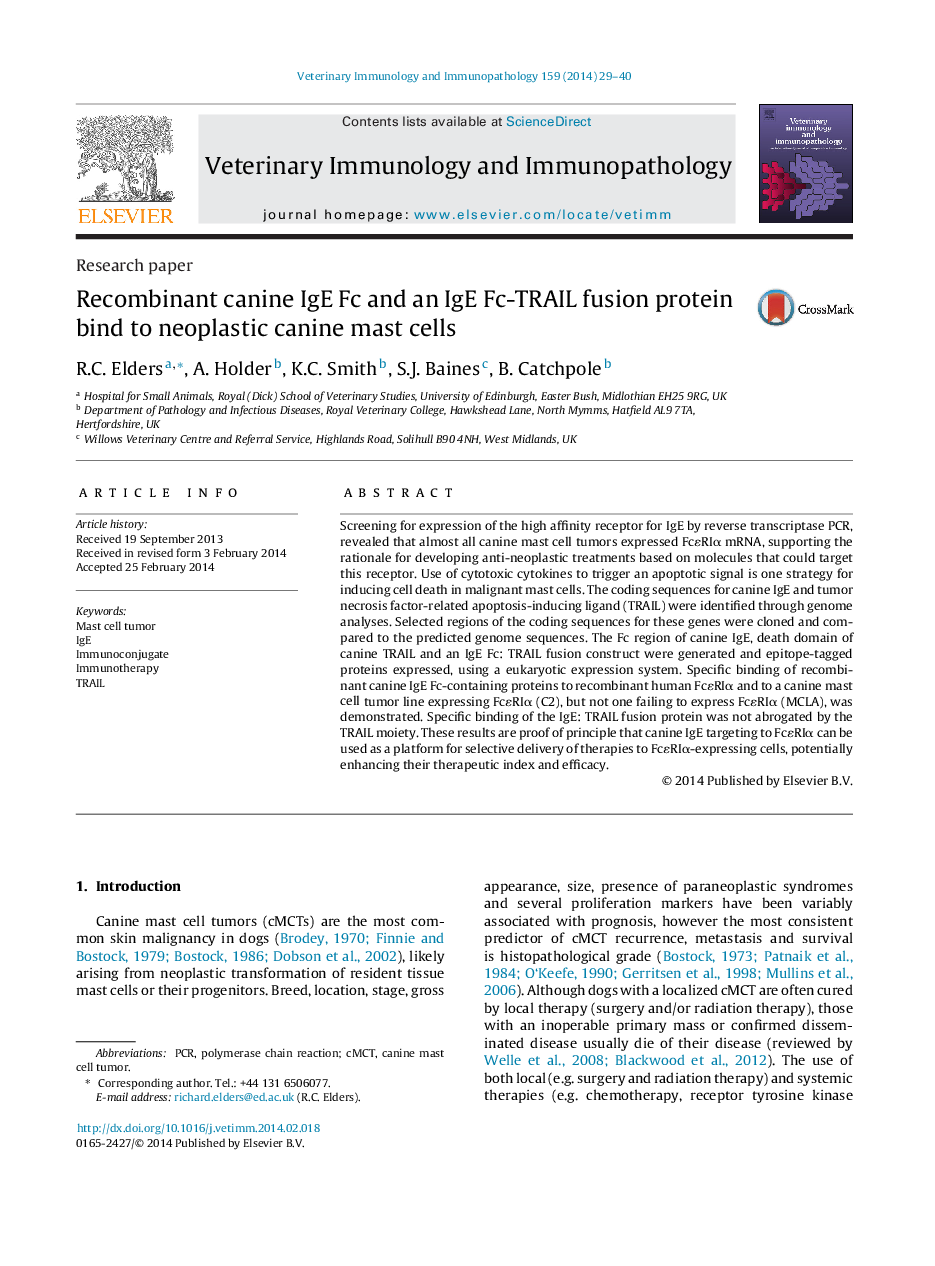| Article ID | Journal | Published Year | Pages | File Type |
|---|---|---|---|---|
| 2461556 | Veterinary Immunology and Immunopathology | 2014 | 12 Pages |
Screening for expression of the high affinity receptor for IgE by reverse transcriptase PCR, revealed that almost all canine mast cell tumors expressed FcɛRIα mRNA, supporting the rationale for developing anti-neoplastic treatments based on molecules that could target this receptor. Use of cytotoxic cytokines to trigger an apoptotic signal is one strategy for inducing cell death in malignant mast cells. The coding sequences for canine IgE and tumor necrosis factor-related apoptosis-inducing ligand (TRAIL) were identified through genome analyses. Selected regions of the coding sequences for these genes were cloned and compared to the predicted genome sequences. The Fc region of canine IgE, death domain of canine TRAIL and an IgE Fc: TRAIL fusion construct were generated and epitope-tagged proteins expressed, using a eukaryotic expression system. Specific binding of recombinant canine IgE Fc-containing proteins to recombinant human FcɛRIα and to a canine mast cell tumor line expressing FcɛRIα (C2), but not one failing to express FcɛRIα (MCLA), was demonstrated. Specific binding of the IgE: TRAIL fusion protein was not abrogated by the TRAIL moiety. These results are proof of principle that canine IgE targeting to FcɛRIα can be used as a platform for selective delivery of therapies to FcɛRIα-expressing cells, potentially enhancing their therapeutic index and efficacy.
